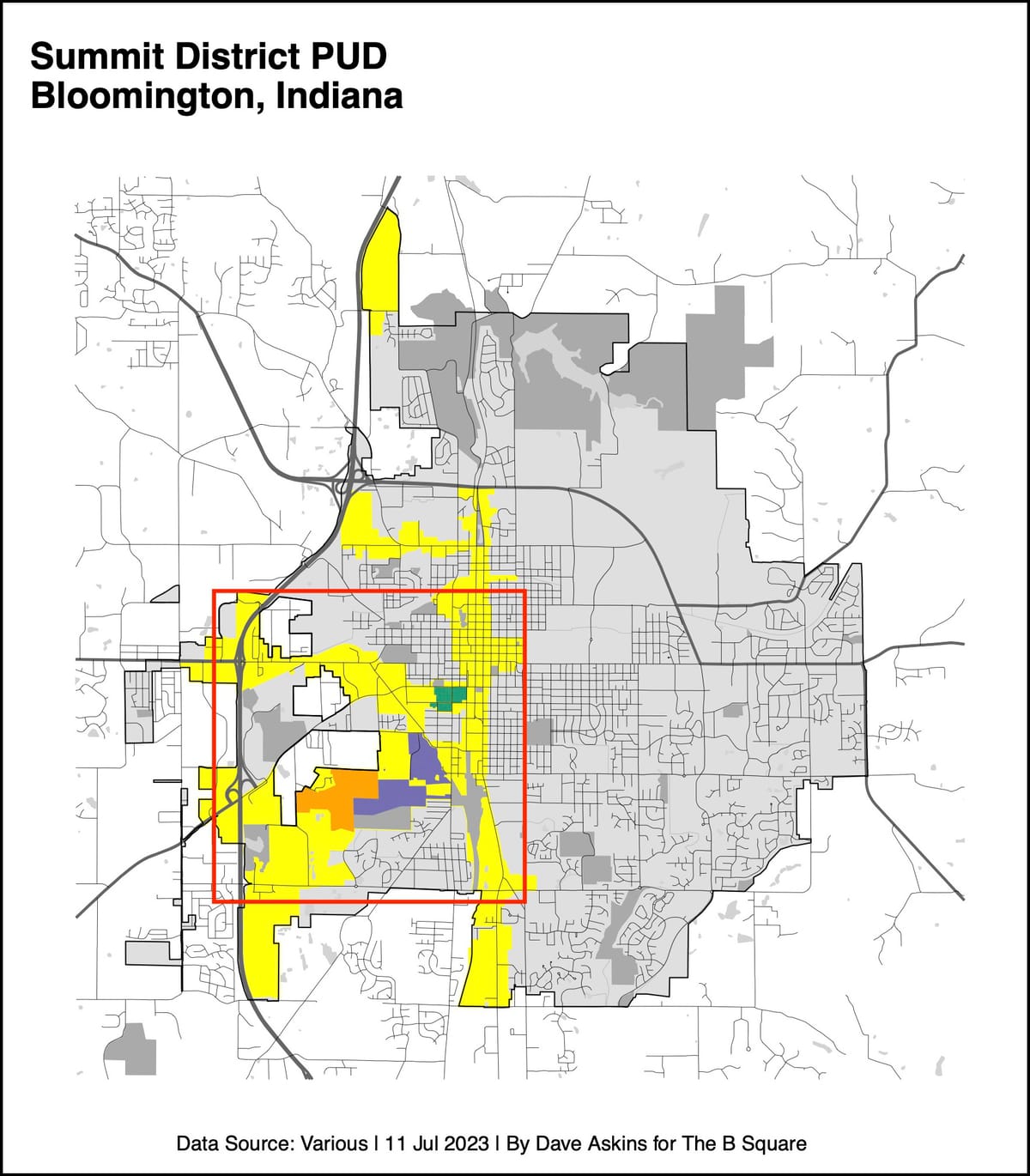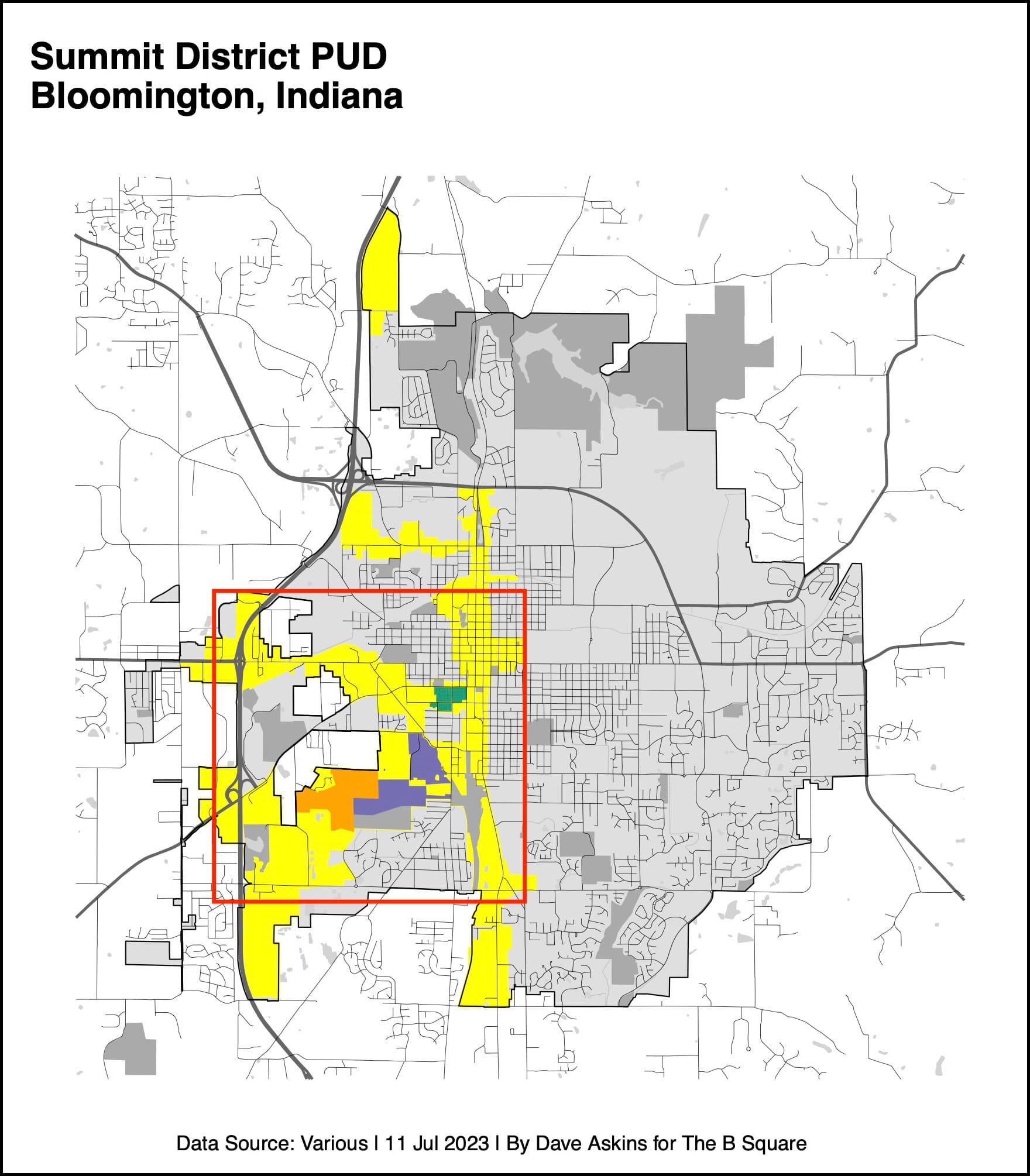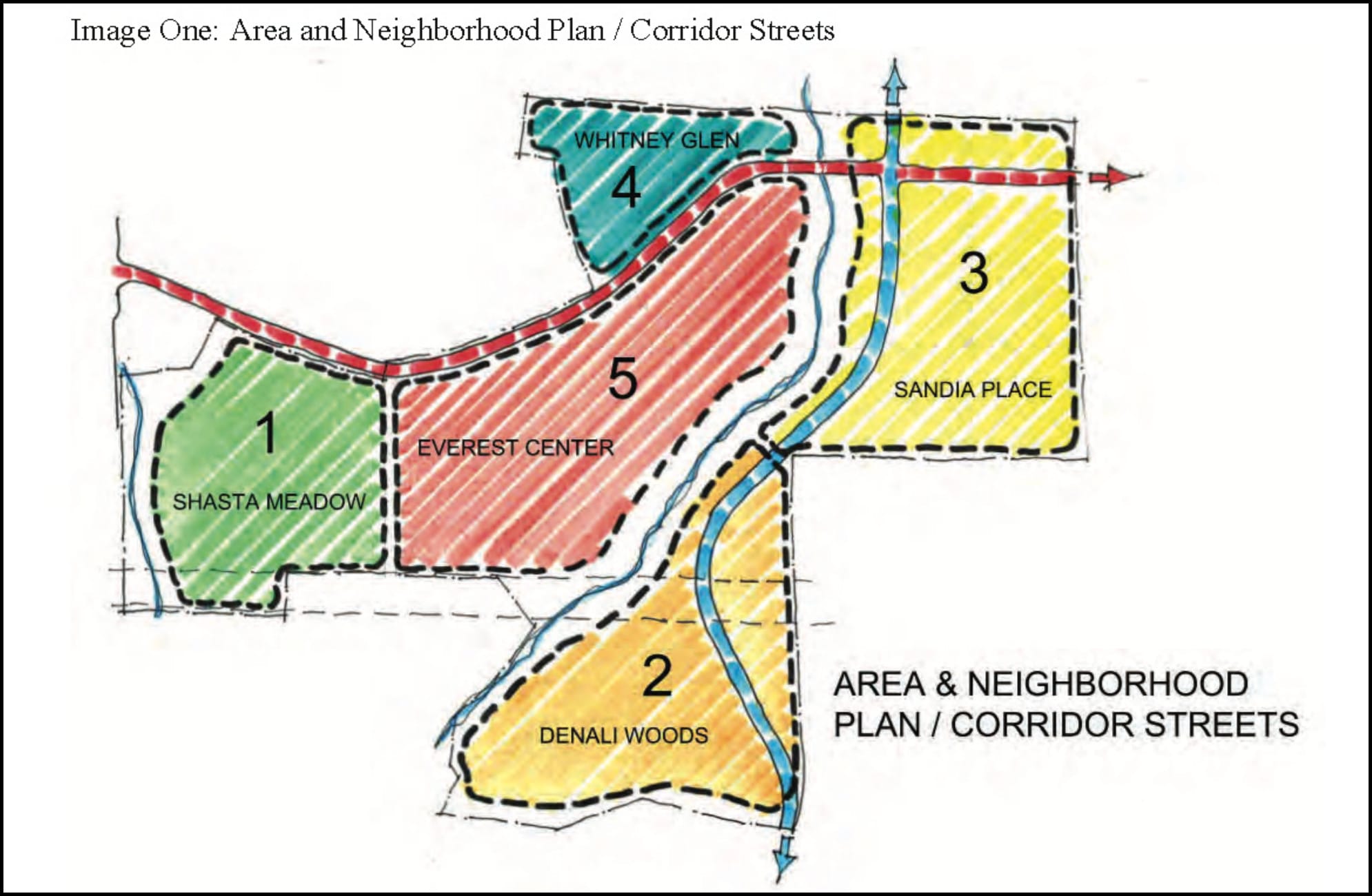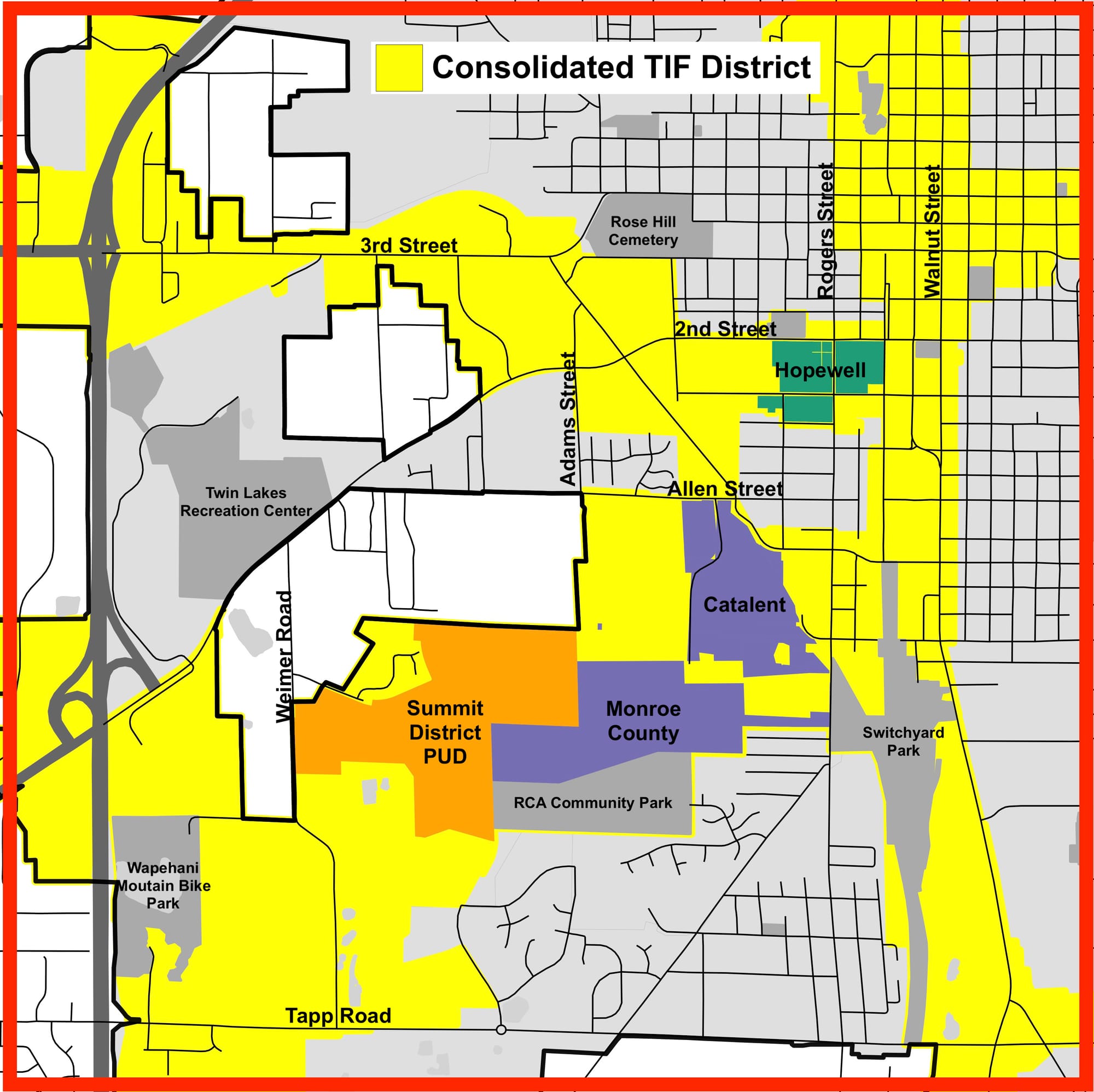Tuesday: Bloomington plan commission to vote on rezone rec for 140 acres in city’s southwest




For a special meeting on Tuesday, Bloomington’s plan commission has set an agenda to hear a single petition—for the rezone of nearly 140 undeveloped acres in the southwest part of the city.
It’s located northwest of RCA Community Park.
If the rezone for the Summit District is eventually approved by the city council, the proposal from Sudbury Partners, LLC could lead to the eventual construction of around 4,250 new housing units, plus commercial uses like a hotel, as well as additional roadway, trail, and utility connections. Sudbury also intends to dedicate land for a trailhead and a fire station on the eastern side of the site.
The build-out of the project is planned in five stages, corresponding to neighborhoods, which are named after mountains (Shasta Meadow, Denali Woods, Everest Center, Sandia Place, Whitney Glen). The first stage, with 550 housing units, is not projected for completion until 2028. Later stages call for completion by 2034.
The plan commission’s job on Tuesday night will be to send the rezone request to the city council with one of three messages—a recommendation to approve it, a recommendation not to approve it, or explicitly with no recommendation.
Three plan commission hearings have already been held on the petition—the first one in July last year.
At the time of the July 2023 hearing on Summit District, it was hoped that an update to the 2019 ROI (Regional Opportunity Initiatives) housing study for Monroe County would soon be available. The 2024 update to the study was released last week.
The 2024 ROI housing study update estimates that by 2035, Bloomington will need 4,155 more units of housing.
Included in Tuesday’s meeting information packet is a traffic impact study, which was done by EMCS, Inc.
The traffic study indicates that 10 intersections would need improvements, under four different “scenarios,” which are numbered 1–4. Scenario 1 is current conditions, and the others reflect different phases of the planned Summit District buildout. The traffic impact study recommends improvements for some of the intersections, even based on current conditions.
Also included in the meeting information packet is an environmental study done by Stantec and a sewer impact study by Commonwealth Engineers, Inc.
The planning staff’s recommendation is for the nine-member plan commission to forward the rezone request to the city council with a recommendation of approval—but with 10 conditions, the first of which is a list of amendments to the wording of the requested rezone.
The meeting information packet also includes written public commentary, opposing the rezone, dating from last year, as well as more recent commentary, also opposing it.
The plan commission’s Tuesday meeting is set to start at 5:30 p.m. in the city council’s chambers. The agenda includes meeting access information, including the link to join by Zoom video conference.




Comments ()